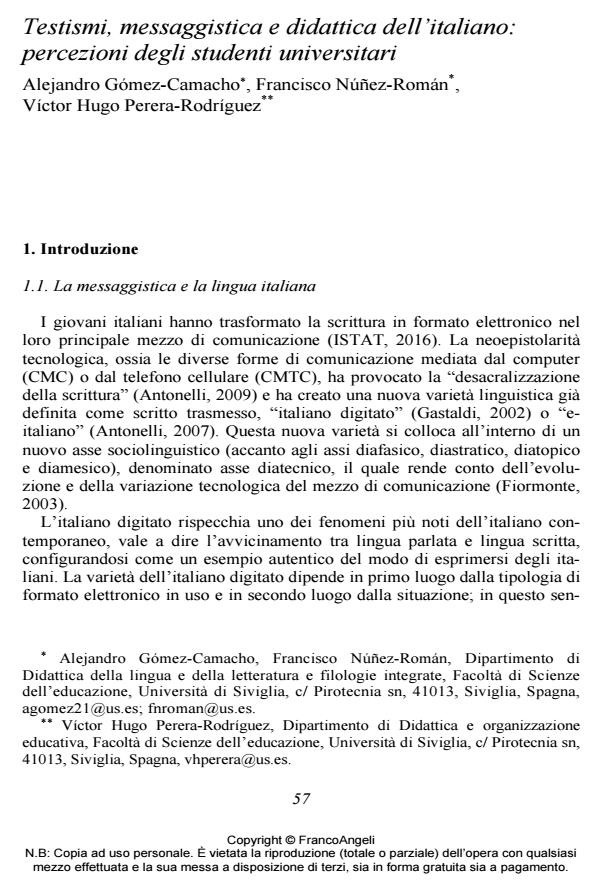Testismi, messaggistica e didattica dell’italiano: percezioni degli studenti universitari
Titolo Rivista CADMO
Autori/Curatori Alejandro Gómez-Camacho, Francisco Núnez-Román, Vìctor Perera-Rodríguez
Anno di pubblicazione 2017 Fascicolo 2016/2
Lingua Italiano Numero pagine 18 P. 57-74 Dimensione file 224 KB
DOI 10.3280/CAD2016-002006
Il DOI è il codice a barre della proprietà intellettuale: per saperne di più
clicca qui
Qui sotto puoi vedere in anteprima la prima pagina di questo articolo.
Se questo articolo ti interessa, lo puoi acquistare (e scaricare in formato pdf) seguendo le facili indicazioni per acquistare il download credit. Acquista Download Credits per scaricare questo Articolo in formato PDF

FrancoAngeli è membro della Publishers International Linking Association, Inc (PILA)associazione indipendente e non profit per facilitare (attraverso i servizi tecnologici implementati da CrossRef.org) l’accesso degli studiosi ai contenuti digitali nelle pubblicazioni professionali e scientifiche
This study analyses the perception of the norm used in text messages among Italian university students, and its effects on the acquisition of orthographic competence in adolescent speakers. 107 graduate students from 48 provinces participated in the survey. Data were collected administering a 39 item ad hoc questionnaire. An exploratory factor analysis was conducted to gather construct validity of the developing instrument. The classification for italiano digitato textisms is confirmed by psycometric properties. The qualitative analysis showed a high degree of rejection in the educational context, although this writing norm was not considered as prejudicial to texts drafted by the participants of the study. The results revealed that the participants have a negative assessment of textisms related to the graphic and phonological level, while they accept textisms related to lexical and semantic level. Also, the dialectalisms are confirmed as relevant textisms in Italian digital writing.
Parole chiave:Text messaging, textisms, spelling, Italian Language, Higher Education
- The influence of mobile instant messaging in language education: perceptions of current and future teachers Raúl Cremades, Juan Lucas Onieva-López, Eugenio Maqueda-Cuenca, John J. Ramírez-Leiton, in Interactive Learning Environments /2021 pp.733
DOI: 10.1080/10494820.2019.1612451
Alejandro Gómez-Camacho, Francisco Núnez-Román, Vìctor Perera-Rodríguez, Testismi, messaggistica e didattica dell’italiano: percezioni degli studenti universitari in "CADMO" 2/2016, pp 57-74, DOI: 10.3280/CAD2016-002006